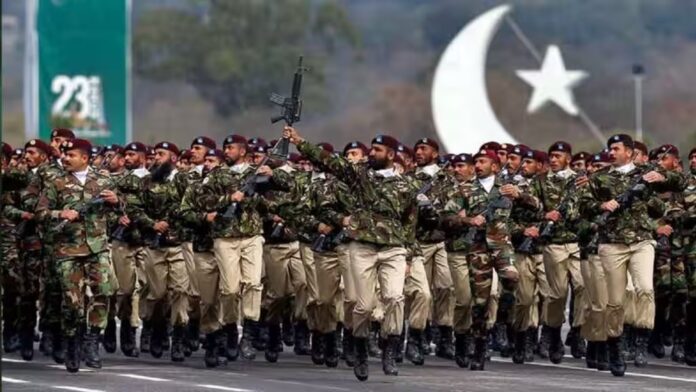As the economic crisis is turning severe, the impact is hurting Pakistan Army. The severity has hit the entire military logistics, prompting the regional command to issue massive cuts in ration for troops and fuel for the military equipment.
The Pakistan army has issued a letter to all field formations and headquarters, ordering the suspension of all war games until December, as it is learnt from the relevant reports.
The reason for taking such extreme steps is the shortage of fuel and essential lubricants.
Colonel Danvir Singh (Retired) who had served the Indian army, commanding the infantry troops is well aware of such impact due to the economic pressures.
In an interaction with Financial Express, Col Danvir highlights the plight of the Pakistan army under severe economic strain.
“A week ago, I interacted with senior army officers, deployed on the Line of Control (LoC), wherein they informed me that there are intercepts from across where troops are complaining about the scaling down of the essential rations,” Col Danvir puts the facts.
“Not only the severity is limited to ration but there have scaled down on FOL–fuel, Oil and Lubricant — which is affecting various aspects of the functioning of the army. This is happening because of the strain on the economy which Pakistan is facing. Now, this is being borne by the frontier troops of the Pakistan army along the LOC,” Danvir explained based on his inputs from the sources.
With fuel prices already soaring at an exorbitant rate of 262 per litre for petrol and diesel, and 164 for kerosene oil, the Pakistan Army finds itself unable to procure the necessary reserve fuel and lubricants essential for operating its fleet of military trucks, tanks, and armoured vehicles.
Pakistan’s leading newspaper The Dwan reports that the ex-depot price of high-speed diesel has reached Rs253 per litre and an increase in the price is considered highly inflationary as it’s mostly used in heavy transport vehicles, trains and agricultural engines like trucks, buses, tractors, tube wells and threshers and particularly adds to the prices of vegetables and other eatables.
According to the official data, the total debt has crossed the benchmark level with an amount of US$ 77.5 billion that Pakistan is required to pay between April 2023 and June 2026. This comes around 22 percent of the country’s GDP.
In fact, in immediate terms, the external debt burden has reached US$ 4.5 billion during April-June 2023 with the highest inflation rate in Asia, surpassing Sri Lanka, with a rate of 38% in May.
Among many other issues, mismanagement and political and military corruption, the debt is accumulated due to unsustainable investment—largely from China—which includes the massive $ 62 billion investment in China-Pakistan Economic Corridor (CPEC).
According to the reports, that alone contributes to a fifth of Pakistan’s GDP, being levelled as another debt-trap project under China’s Belt and Road Initiative (BRI).
In fact, the overall economic situation has reached a breaking point with sky-high inflation and foreign exchange reserves barely enough for a month of imports.
While Pakistan secured a badly-needed $3 billion short-term financial package from the International Monetary Fund (IMF) last week, the economic stress seems to continue for the lack of any concrete policies for the recovery.
This [the partial bail-out package] will only serve as a quick-fix as it teeters on the brink of default, outlines a senior economist who worked with IMF.

































